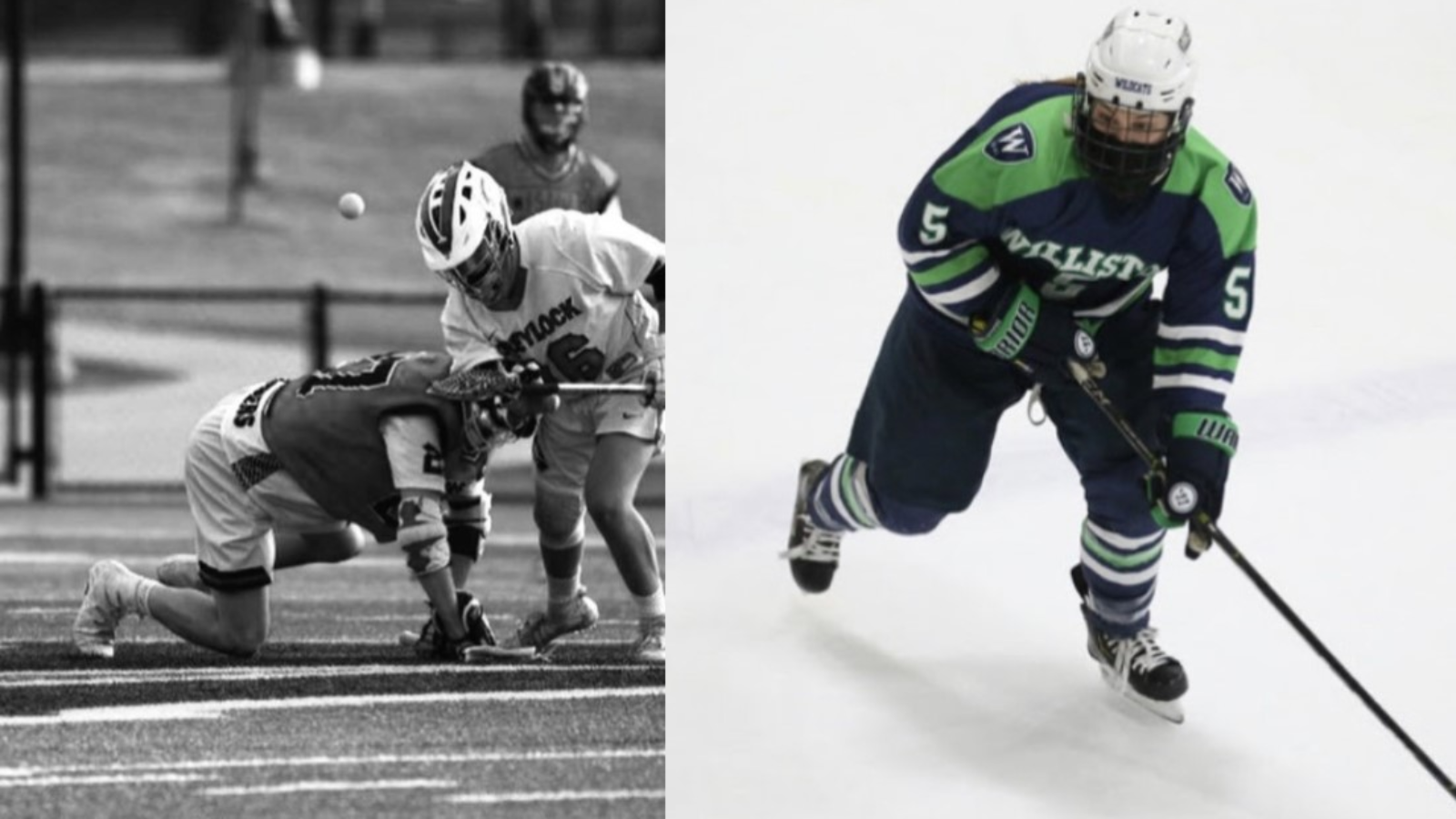Two of many Williston students in varying stages of recovery from season-ending ACL tears are debunking the myth that cross-season training spoiled their ability to participate in the sport they were recruited for.
Junior Tate Kuster is in full recovery from an ACL tear that put a major setback on the recruiting process months before the 2021 spring lacrosse season. Tate, back to 100% on the field now, is eager more than ever to showcase what he’s been preparing for. Tate, a repeat sophomore from Williamstown, Mass., has yet to take a face off for the Wildcats due to his injury, which he got in March 2021 at lacrosse Nationals, just weeks before the Wildcats season began.
Tate said his injury affected him both mentally and physically.
“At first, after my surgery in March, I felt helpless” says Tate. “I was in a terrible mental state and felt sorry for myself; I was physically worn out and had no motivation anymore.”
Once he got off of his crutches and into physical therapy, his whole mindset changed. Although it was tragic to lose his sophomore spring for lacrosse recruiting, along with this past summer and fall of his junior year, Tate took an optimistic approach.
“I grew obsessed with my recovery and physical therapy, watching films and trying to improve at every aspect of my sport,” he said. “My mindset was: minor setback, major comeback.”
Overall, Tate believes tearing his ACL “gave me a certain edge and drive that most athletes won’t have without going through a similar heartbreaking experience.”
“The drive to recover and improve is something that cannot be taught, it has to come from inside you,” Tate continued, optimistically. “I believe that through these 10 months since my ACL tear I will be coming back a much stronger, more athletic, and dangerous player.”
Another athlete in the Williston community who recently underwent ACL surgery is hockey player Caroline Aufiero.
Caroline, who is at the beginning of her recovery period, experiences everyday activities becoming increasingly difficult, such as walking up stairs. She is noticing herself making progress, however, which has helped her adopt a more positive mindset.
Hockey has always brought Caroline happiness, so it has been extremely difficult having this aspect of her daily life taken away.
“No matter how hard of a day I had, or how much homework I needed to do, hockey has always been an outlet for me,” Caroline said. “However, with the help of my teammates, coaches, teachers, and friends, I get through the day with a smile on my face.”
Caroline admits it was a pain — both physically and emotionally — to get injured during soccer, which is not her primary sport.
“It was devastating getting hurt playing a sport that didn’t mean as much to me as hockey does,” she said. “I know that I can get injured in a hockey game, but that means that I get hurt doing something that I want to pursue past college and throughout my life.”
Caroline knows, “It’s not everyday that I will be able to tie my skates and get on the ice, so when I do get back, I will never take a second for granted.”
With nine months of recovery ahead of her, Caroline remains optimistic and driven to meet her recovery goals and return to the ice. Having a major setback such as this creates the strongest athletes mentally and physically, which is shown through Caroline’s determination to compete again. Despite Caroline’s beliefs that her injury could have been prevented if she hadn’t been a member of the Girls Varsity Soccer squad, both athletic trainers, Ansel Garvey and Melissa Brousseau, claim otherwise.
Brousseau and Garvey, spoke to the scientific approach to injury prevention, and the increased likelihood of injury that occurs with athletic specialization — when athletes only play their primary sport.
Both agree that focusing on one sport without athletic performance or cross-season training with a similar sport will increase chances of injury.
Brousseau emphasizes the number of predicted injuries in athletes who do not cross-train; for example, basketball players frequently experience patella tendonitis from overuse of their knees and excessive amounts of jumping, and competition on hardwood floors without seasonal breaks is predictable.
She also explains the high risk of tearing a rotator cuff playing tennis without another sport or lifting program to break up the seasons and keep athletes fresh and versatile, working different muscle groups year round instead of the same specialized for an athlete’s main sport.
According to an article on single sport specialization by Changing the Game Project, “Athletes in the study who specialized were 70 to 93 percent more likely to be injured than children who played multiple sports.”
Dr. Christopher Dolan, a member of an organization called STOP Sports Injuries, is well-versed in overuse injuries in sports, and states that “repetitive micro-trauma to the tendons, bones and joints” are the result of single sport specialization.
Dr. Dolan shared information from the American Academy of Pediatrics.
“Specialization of sports before puberty is directly correlated with a higher incidence of overuse injuries,” he wrote. “They’ve shown that the young athletes that play diverse sports, actually play at a higher level, for a longer period of time, and experience less injuries, and that’s because of using different motions.”

